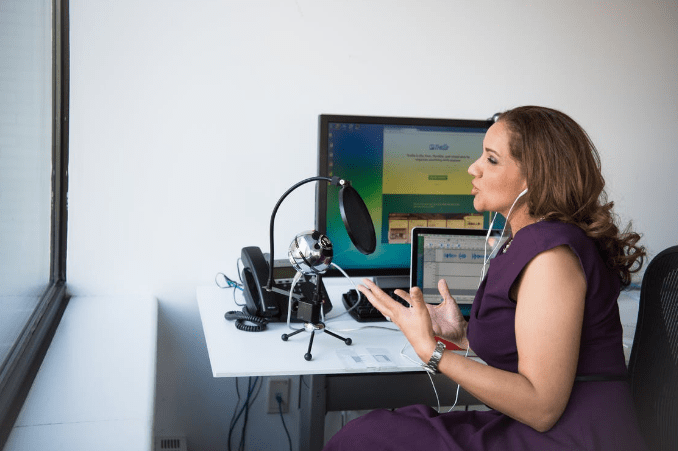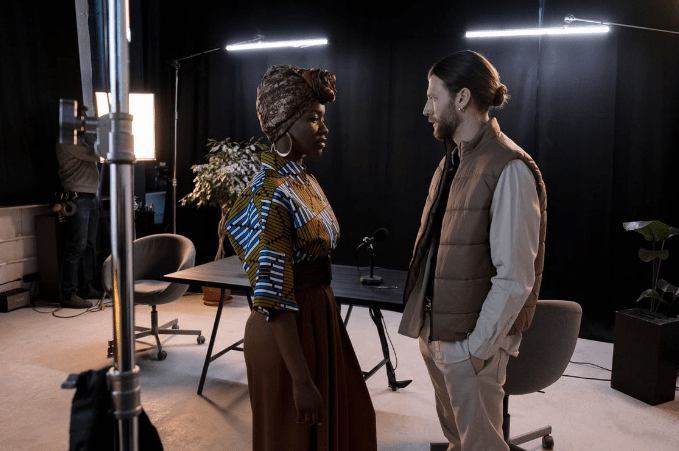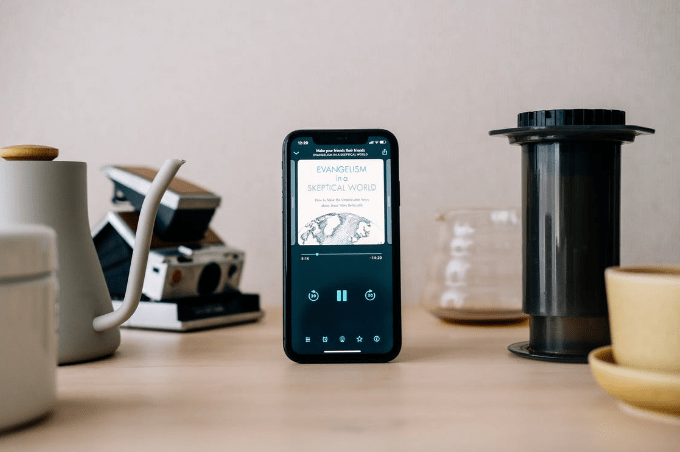Content marketing comes in all shapes and sizes. For authors like you, blog posts, social media updates, photos, videos, slideshows, and many more options are available. You can also add podcasting to this mix. Audio is used intelligently with the content design of some major websites and blogs. Tim Ferris, the author of The Four Hour Work Week, launched a very popular podcast on his blog. Copyblogger launches the Lede podcast among the traditional leading marketing publications.
Podcasts don’t go anywhere. Have you considered making your own? If so, here’s something I’ve figured out about how to head towards this new content. Read on to teach beginners about the basics of podcasting.
Want to know how to make a podcast? Good quality! The “why” of a podcast host is “distributing life-changing sound programs.” So we are here to help you.
In this article, we will walk you through every step of starting the show, from planning to publishing. In the end, you know exactly how to make a podcast, and I hope you’re motivated to do that as soon as possible!
Why Start a Podcast In 2021
Although there is a plethora of reasons to start podcasting in 2021, we found that the following things stand out:
Low competition
YouTube marketing and blogging are now a lot more competitive than they used to be. Over 500 hours of video are uploaded to YouTube each day, while bloggers publish nearly 10 million posts a day. It’s difficult to stand out in that sea of content. Fortunately, podcasting is still a relatively young form of content compared to the former, so it’s easier to get traction if you manage to record a good podcast (with blogging and YouTube, you still need to promote good content).
SEO benefits
Podcasting is your secret weapon for getting good search engine rankings. As you probably know, Google and Apple has been gathering data to improve the voice assistants present on our smartphones. As such, these assistants have gotten smarter when it comes to depicting language and the quirks that we sometimes use in our daily life. It won’t be long until you see audio and podcasts included in search engine result pages.
Tips for a Perfect Podcast
Plan
This is the first (often overlooked) step in creating a podcast. You will want to spend a lot of time here before proceeding. Get your hands on a laptop or whiteboard to start planning your podcast like a pro.
Select a topic
You want your podcast to focus on a specific topic or niche. Limit yourself to what you can tell in multiple episodes (more than 100), but not so broad that your audience will not like it.
For example, talk about a hike instead of an “outdoor” podcast, more specifically like a hike for 14 people. You can always expand the theme as it becomes more popular in the future.
Host selection (optional)
Do you have a friend, business partner, or coworker you want to work with? Starting a podcast can be a lot easier if you have a co-host. Of course, if you both share a point of view on the subject, you can have a more engaging conversation. It can also be helpful for someone to pursue a problem. You can also edit, advertise and share additional information.
However, there may be downsides too. You need to make sure that both are committed to the cause in the long run. You can also set a schedule from scratch so you know when to record every week. However, there are no rules here. When the co-host leaves, you can continue the podcast without the podcast. Alternatively, you can boot them individually and add co-hosts later. It’s important to get started, so let’s choose a name.
Please select a name
You can find a variety of titles by looking at the charts of the most popular Apple Podcasts. Some people explain what it means, others don’t. I will contradict what I said earlier: you seem to want to choose a name that is wider than your subject. Thought about this when writing this. I am sure you can do better!
Create a cover
Cover art is the first impression most people see when viewing Apple podcasts or their favorite podcast apps. It can also be a picture someone will see when sharing a show on social media. Buzzsprout has a great article on cover design, so let’s get started for sure. If you’re on a tight budget, it’s a good idea to make 99 patterns. Hundreds of different designers can create a draft, then select and modify the ones you want.
Introductory Music Selection
I’m a big fan of PremiumBeat for podcasts. The application is simple, you can get a full license, and it comes in a variety of styles. For more options, read this post on royalty-free music. Most people don’t want an unlimited subscription service. One or two songs are enough.
Use Microphone
Sound quality matters, but you don’t have to pay a lot to get a good quality podcast mic.
USB microphone and XLR connectors allow you to upgrade your recording equipment without a new microphone. We recommend checking out the podcast starter pack’s post about the add-on here. Especially if you plan to have one or two co-hosts. You can use noise-canceling earbuds for better results,
Guest podcast
If you run an interview program, it’s time to make a list of people you want to include in your podcast. Then reach out to them. This way, people can use services like Acuity Scheduling to order directly from the calendar that’s right for them. This will reduce the headaches of planning your meetings and let you focus on attracting more guests!
Alternatively, you can request certain information, such as your Skype username or introduction, to read when planning. If you want to record an interview when you are not in person (or if the co-host is not in the same room), use and recommend Iris.
Recording and editing
If you’ve never used editing software before, even simple steps from GarageBand or Audacity can be quite challenging. This is understandable. Sound production is full of jargon! In this case, Alito may be the right choice.
It’s a podcast creation tool that automates complex technical details and creates a sequence. Everything is fine in the browser, you don’t need to download any software, it works on any computer with an internet connection.
Remote interview
For many people, the easiest way to remotely record interviews and audio (or video) using Skype is to use Ecamm Call Recorder for Skype (Mac only) or Pamela (Windows only).
If you want better audio quality than Skype or Zoom allows, or if you want to have separate audio files for more than one person, a service like Iris is for you. It is intended for remote recording of interviews and podcasting.
Give them a reason to listen
Whether you’re giving someone some information to help you lose weight (for personal trainers), or having a very entertaining interview with one of your favorite writers (for zombie podcasts), you’ll add value. Your listeners.
You not only gave them a reason to listen, but you also gave them a reason to come back again and again. It is important to keep this in mind during the planning stage. Can you record 10 to 15 episodes that you think your target audience would like to hear?
Choose a Good Title
Just like choosing a podcast title, it’s important to choose a searchable descriptive title for your chapter. The biggest mistake in naming a chapter is calling it Section 1, Section 2, and so on. No one knows what to expect if they hear. The point of podcasts is that people can listen to them, so let me know why you need to click on one of the chapters.
Explain to people what they get from your show. If you look in the podcast directory, you’ll find programs with titles such as “how to…”, “5 tips for…” They are popular because they work. All you have to do is make sure the title is doing as promised in the chapter.
Conclusion
Starting a podcast isn’t for everyone. It takes a lot of time and effort. Not to mention the initial investment (I know some of my recommendations aren’t cheap). But I don’t read this unless you’re half-finished recreating yours. We’ve covered a lot of issues here. Too many to share in heap articles. However, this guide is required to provide info.
We discussed why you should (or shouldn’t) create a podcast. We considered the purpose of this and who the audience was. You have chosen a theme for your podcast, description, and title. It made me think about SEO and how to stand out.



